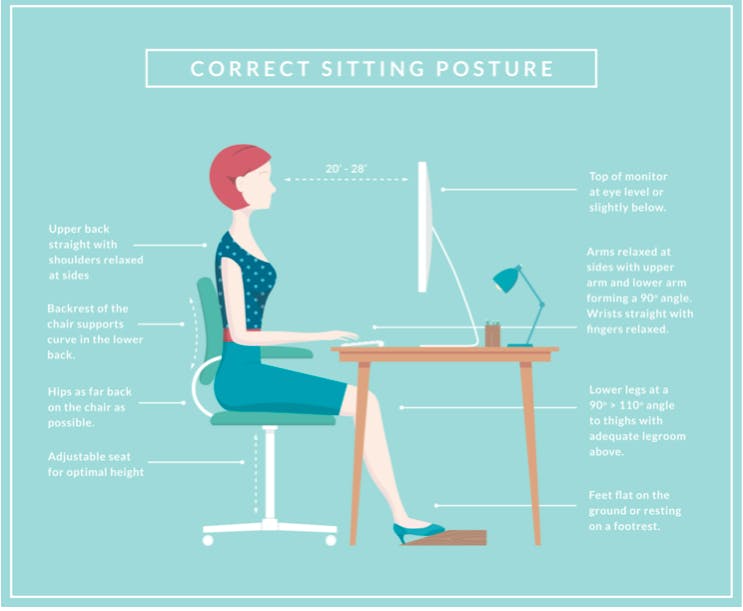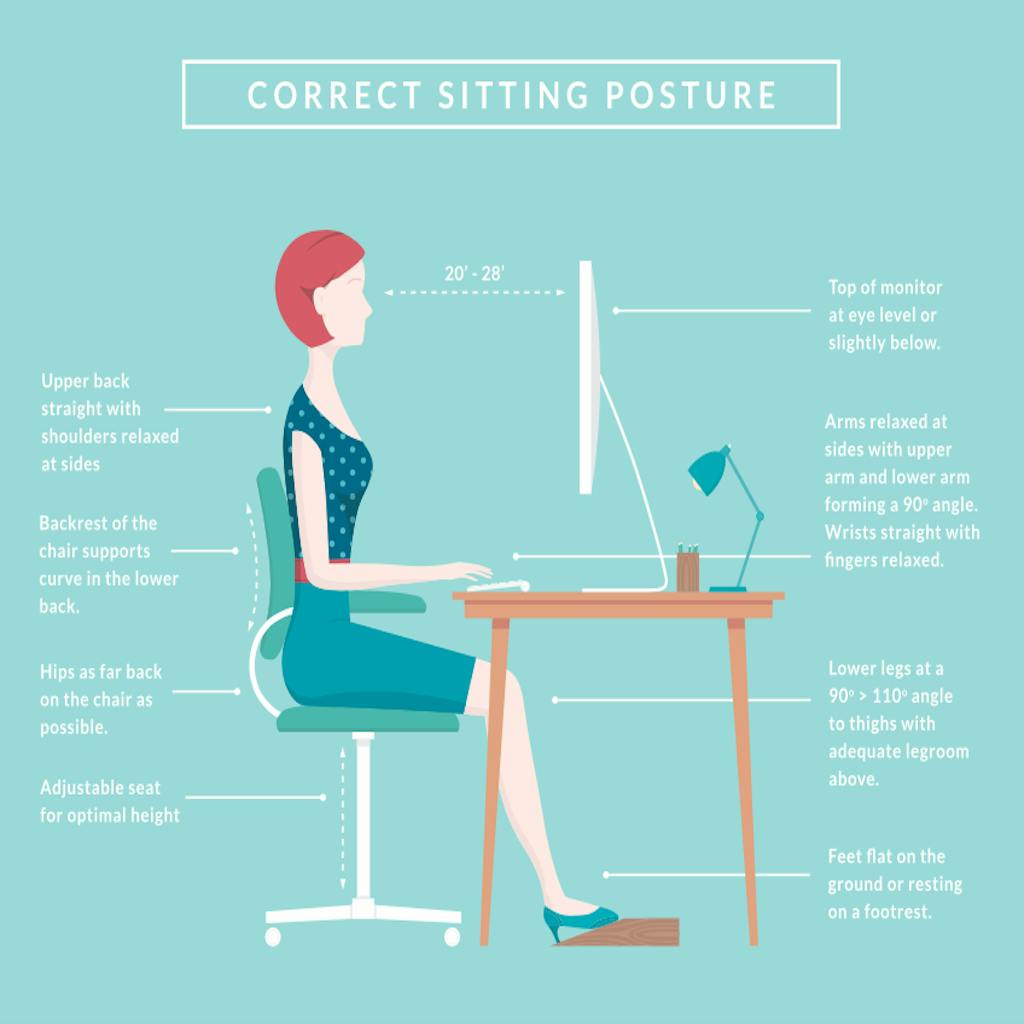
“Stop slouching, sit up tall, head up, shoulders back!” Chances are you heard some form of these phrases throughout our life…We may even say them to ourselves as we plug away sitting at the computer for 8+ hours a day. Read more as we dive into top recommend desk posture tips from your local doctor.
It is not surprising news that sitting for the majority of the day, every day, is not good for our bodies. Research suggest that sedentary lifestyles greatly impacts our overall health and wellness. According to the World Health Organization , sedentary lifestyle can double the risk of cardiovascular disease, diabetes, and obesity. If you are sitting at your desk for 8+ hours a day you may wonder, what can I do to help myself? The best way to help improve your overall health and reduce the aches and pains that come with sitting in front of a screen all day is by sitting with good posture.
Top 5 Proper Desk Posture Tips
Step 1: Get yourself a good chair.
Instead of purchasing an ergonomic desk chair, you can set up a desk with minor adaptions to help improve the way your spine is sitting. Consider these recommendations:
- When sitting in your chair, scoot back as far as possible.
- Support your low back by resting the curve of your lower back on the back of the chair.
- If your chair is not set up with any lumbar support, meaning it has a straight back, you can take a rolled up towel or small pillow and place it in the curve of your low back for support.
- Adjust the height of your chair so that your knees and hips are at about 90 – 110 degree angles with your feet resting flat on the floor.
- If your chair isn’t able to adjust, or your feet aren’t touching the floor, you can place them on a small step or stool to obtain the optimal angle.
Step 2: Adjust your desk and monitor
After getting your chair at an ideal setting, the next step is to make sure your desk and monitor are set up properly. With your low back in a good position you want to make sure your upper back is straight, with your shoulders relaxed back, away from your ears. Similar to your knees, arm rests should be adjusted so that your elbows are resting at about a 90 degree angle with your wrist and fingers relaxed.
From your sitting position, you want your screen to be placed straight in front of you at or slightly below eye level about 20-28 inches away from you. If you have a desktop monitor you should be able to adjust the height of the monitor. However, if you have a non-adjustable monitor, you can use stacks of books to raise your screen to meet your eye level.
Set up your key board so that is is sitting directly in front of your computer screen about 4-6 inches away from you so that your wrists are resting on your desk. Place your mouse to the right of the keyboard so that is within the same distance to prevent over reaching.
To avoid excessive twisting and reaching, place frequently used objects within easy reach to prevent straining.

Step 3: Take frequent breaks
As previously stated, sitting for long periods of time is not ideal for our body. It can reduce blood flow and increase fatigue. To help reduce fatigue and improve circulation, take frequent breaks. Stand up at your desk and move for 1-2 minutes about every 30 minutes. You can stand and stretch, take a quick lap around the office, do a few squats, or some heel raises.
Unfortunately the majority of us spend most of the day sitting down. However, knowing what good posture looks like and taking frequent breaks can help reduce daily soreness, strains and injuries.
Learn More
If you’re experiencing consistent pain during the work day despite these adjustment, the issue may be larger than just adjusting your sitting posture. Consider seeking professional help from a physical therapist or doctor to figure out the cause of your pain. Physical therapy is a great resource in managing multiple conditions and can improve overall posture and body awareness. For more information on how Action Potential can help you, request an appointment today.
